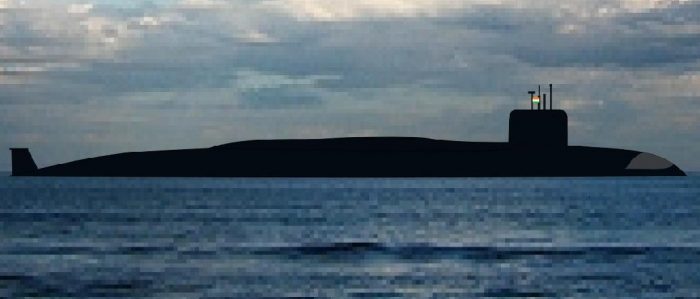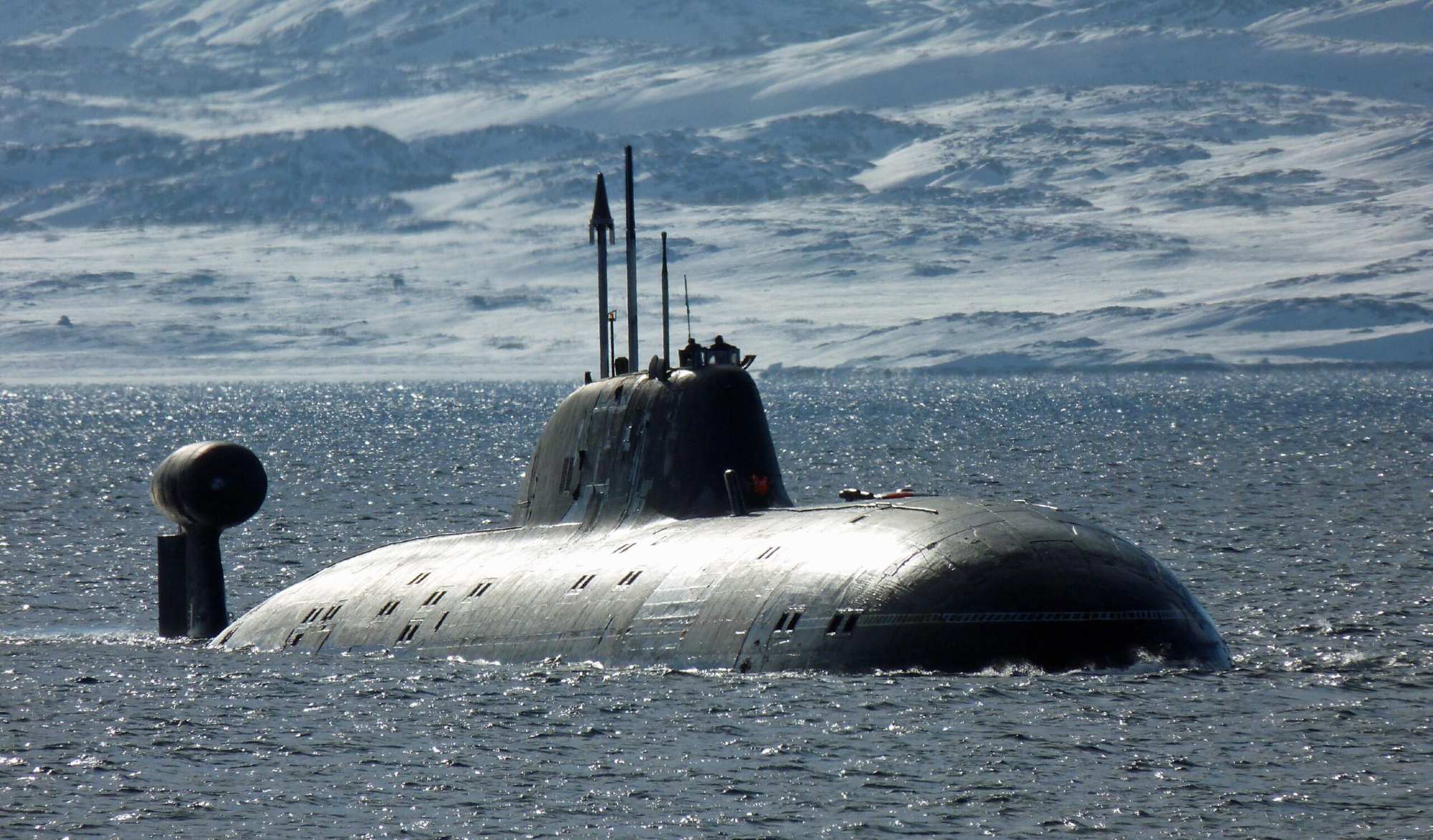India’s second-strike nuclear capability will be fully operationalized by next year as it inducts its third nuclear submarine – INS Aridaman (Destroyer of Enemy), equipped with K-4 submarine-launched missiles with a range of 3,500 kilometers.
This will bring a significant portion of China within India’s strike envelope giving it a credible minimum nuclear deterrence.
In case of a nuclear conflict, the highest level of survivability lies with equipping nuclear-powered submarines with ballistic missiles with sufficient ranges. Since the submarine-launched ballistic missile first came into being, it has been considered the most survivable delivery system, as ocean depths remain opaque to a large extent.
In August 2024, India inducted INS Arighat (also meaning Destroyer of Enemy) into the Indian Navy. The induction ceremony took place in Vishakhapatnam, Andhra Pradesh.
Before this, the Indian Navy already had INS Arihant in its flotilla. However, both these submarines are armed with K-15 missiles with a range of 750 kilometers, limiting their strike capability.
German Submarines For India! Will Navy’s ‘Cutting Edge’ Stealth Boats Float If ThyssenKrupp Sinks?
Even in a conflict with Pakistan, these missiles would only have targets within its range in the south of the country. These are the first indigenously developed short-range submarine-launched ballistic missiles (SLBMs).
Hence, the developers have to overcome significant challenges like the underwater vertical launch system, which is among the most sophisticated and complex weapons since it demands stability, speed, and accuracy in two mediums—water and atmosphere.
INS Aridaman was recently photographed through satellite imagery. It is longer than the previous iteration of the Arihant class submarines. INS Aridaman is ‘slightly larger,’ with a load water line measurement of 125.4m compared with 111.6m of the 6,000-tonne INS Arihant, the lead boat in this class.
‘Top Dog’ In Drone Warfare, China’s PLA Misses 60% Of Targets When Neutralizing ‘Enemy’ UAV Swarm
The Launch tubes visible in the image indicate that the submarine will be able to carry twice the number of submarine-launched ballistic missiles than its predecessors.
The induction of S-4 will greatly boost India’s nuclear deterrence. The lack of at least three operational submarines means that the submarines are primarily in and out of the harbor without maintaining constant atomic deterrence.
A nuclear-powered attack submarine or SSBN guarantees survivability of nuclear retaliatory capability. With its long coastlines and peninsula, the SSBNs can remain hidden in ocean depths during the conflict to ensure the survival of second-strike capability.
“For nuclear deterrence, one submarine always needs to be on patrol. If Arihant is in and out of the harbor, it is not exactly a deterrent,” an Indian Navy officer told the EurAsian Times. “We need 3-4 SSBNs so we can keep one on patrol when one may be in port, one going for patrol, and one coming back,” he explained.
Buttressing his point, the officer referred to 52 years of Continuous Sea Deterrent (CASD), the UK’s longest-sustaining military operation. “If one cannot sustain it, it is hardly a deterrence,” he concluded.

SSN & SSBNs Put Aircraft Carriers On Backburner?
After INS Aridaman, the Indian Navy plans to construct another SSBN, code-named S-4*. In addition to the nuclear ballistic missile submarine, the Indian Navy has been seeking AoN from the government to build two nuclear-powered conventionally armed submarines (SSN). The force does not have a single SSN in its fleet so far.
In comparison, China’s submarine fleet consists of more than 70 submarines, including seven nuclear ballistic missile submarines (SSBN), 12 nuclear attack submarines (SSN), and more than 50 diesel attack submarines (SSKs). In contrast, most of India’s conventional submarine fleet was acquired in the 1980s and is getting old.
ALH Dhruv Crash: When Ecuador Grounded All Indian Choppers & Terminated Deal, Shocking HAL
Nuclear-powered submarines are so critical for the Indian Navy to match the growing power of the PLA Navy that the latter has reportedly shelved/put on hold its plans to build a 65,000-ton Indigenous Aircraft Carrier (IAC)-2 in favor of the SSN project.
The Indian Navy has been contemplating the issue for a long time. Former Chief of Defense Staff General Bipin Rawat had asked the Indian Navy to prioritize its operational requirements in the face of a limited budget.
Talking about prioritization of operational requirements, General Rawat said in 2020, “Anything on the surface can be picked up by satellites and knocked off by missiles. I think the navy needs more submarines rather than aircraft carriers, which require their armadas for protection.”
SSNs are game changers. They are powerful platforms with stealth and unlimited endurance. They can remain underwater indefinitely and operate far away from the port for long periods and at high speeds. They can move along as part of the carrier battle group. Armed with long-range missiles, they can change the shape of maritime battle.
The SSN has greater reach, endurance, and speed than the slow and short-legged diesel submarine. It can remain submerged for months, as compared to hours or days for the diesel engine-cum-battery propelled conventional boats, even one with Air-Independent Propulsion (AIP).
Once it dives into deep waters, the SSN is not only difficult to detect but also has enough speed (unlike the diesel sub) to overtake or outrun most other warships if necessary.
The classic roles of an SSN are to protect carrier battle groups and to hunt enemy SSBNs, but it is also an ideal platform for the anti-ship, land-attack, and surveillance roles.
There is an ongoing debate about which platform is better—an SSN or an aircraft carrier. Commodore Anil Jai Singh (retired), a former Indian Navy submariner, sees the two platforms as complementary.
“With AUKUS submarines at the approaches to the Indian Ocean and our SSNs in the Indian Ocean, the Chinese CBGs (Carrier Battle Groups) could find the going tough. But we could build them in stages. Comparing aircraft carriers with SSNs is not an apt comparison as each is a potent war-fighting platform in its own way. In fact, for a blue water Navy, aircraft carriers and SSNs complement each other,” he adds.
Nuclear Sharks – Expensive Yet Necessary
SSNs and SSBNs are expensive propositions. However, the Indian Navy has gained invaluable experience maintaining and operating nuclear-powered submarines through the leased Russian Akula class submarines.

The importance of SSNs in India’s security calculus is evident from how the Navy deployed its only Russian Akula class submarine, rechristened INS Chakra, on the eastern side of the Indian Ocean during one of the many border standoffs with China in the past decade.
According to reports, INS Chakra slipped out of the Visakhapatnam harbor on India’s eastern seaboard and disappeared for over a month after diving into the Bay of Bengal. Her deployment to the East was a well-kept secret. It demonstrated India’s ability to carry out maritime strikes in response to land aggression.
India presently has two nuclear-powered ballistic missile submarines (SSBNs). As an instrument of India’s nuclear deterrence, they cannot be deployed for tactical missions.
That is where the SSNs come into play to counter numerically superior navies. They can stalk and shadow targets at will, and their near invulnerability makes them the most potent weapon in a country’s arsenal.




